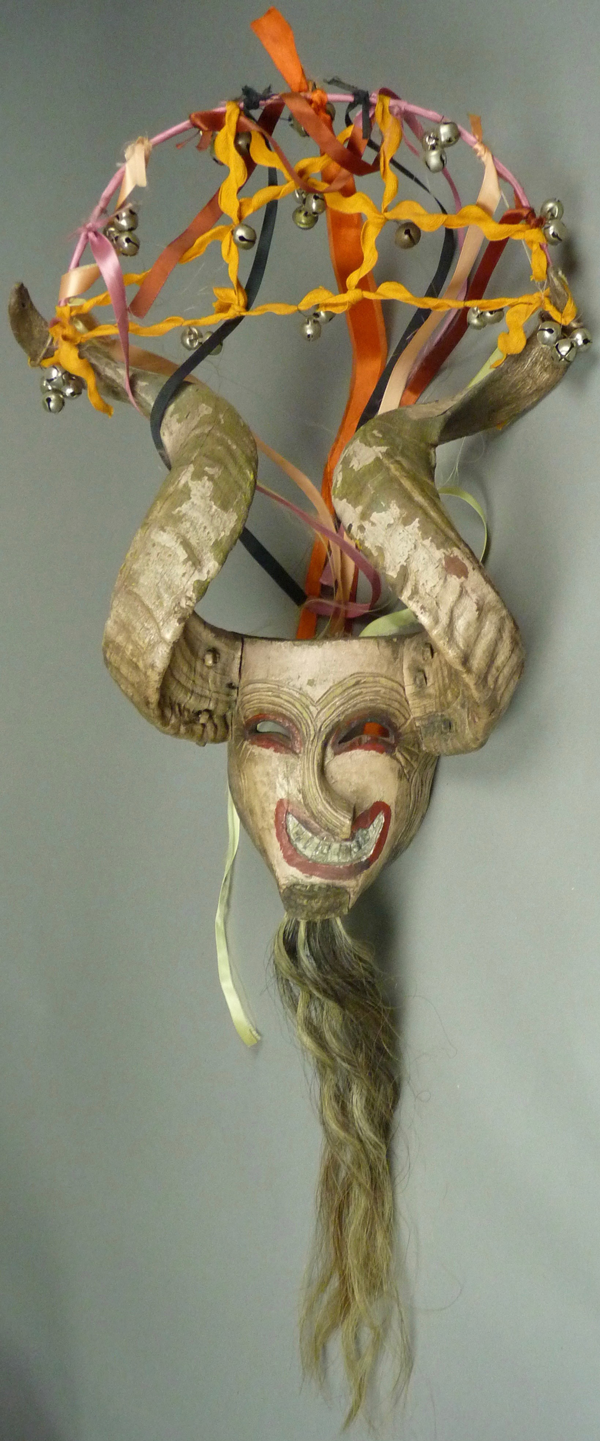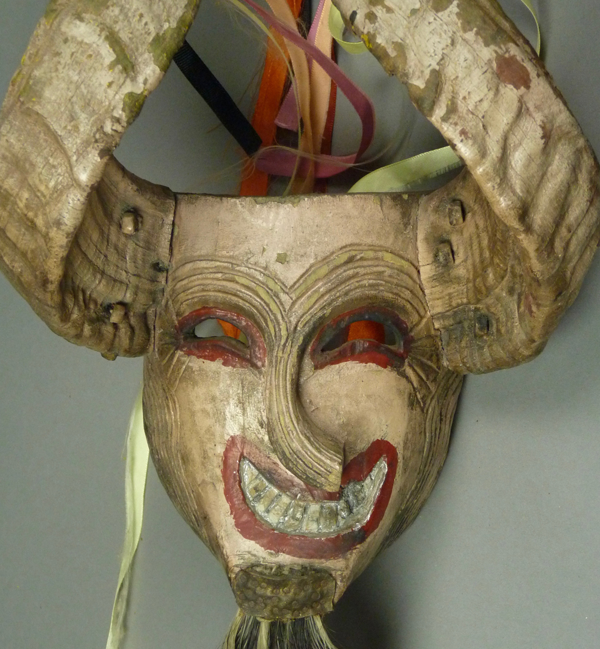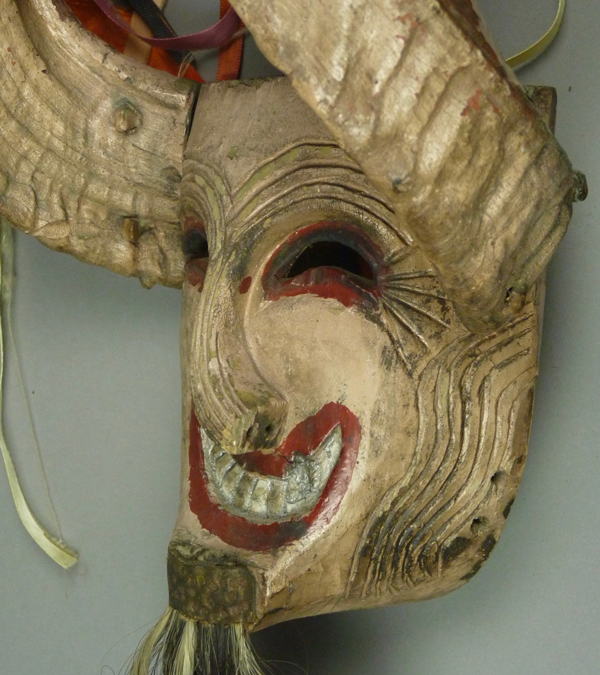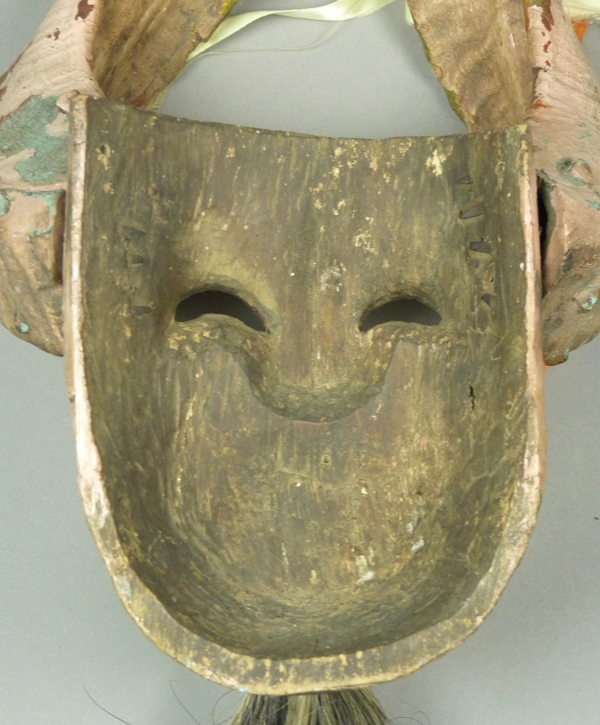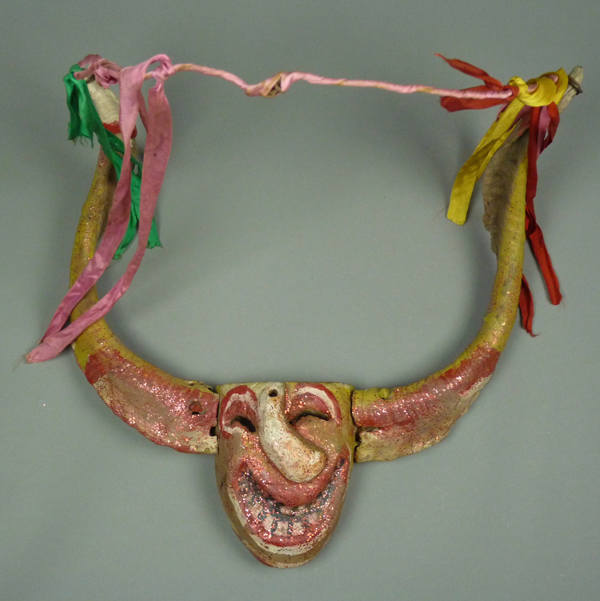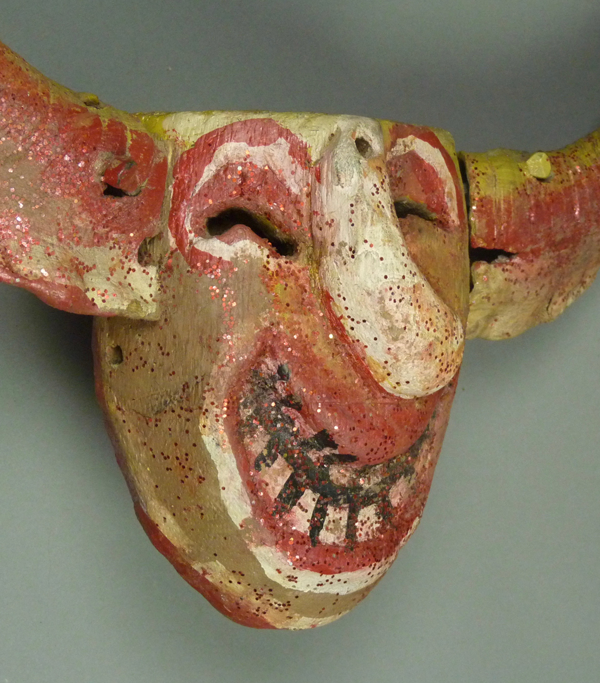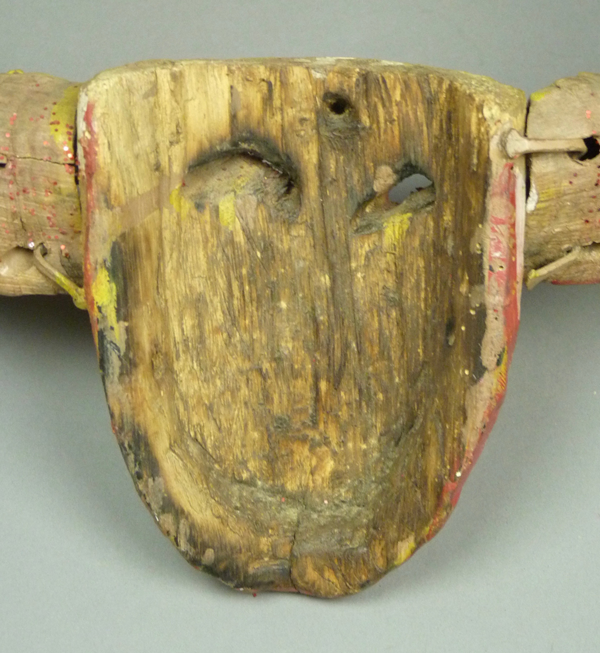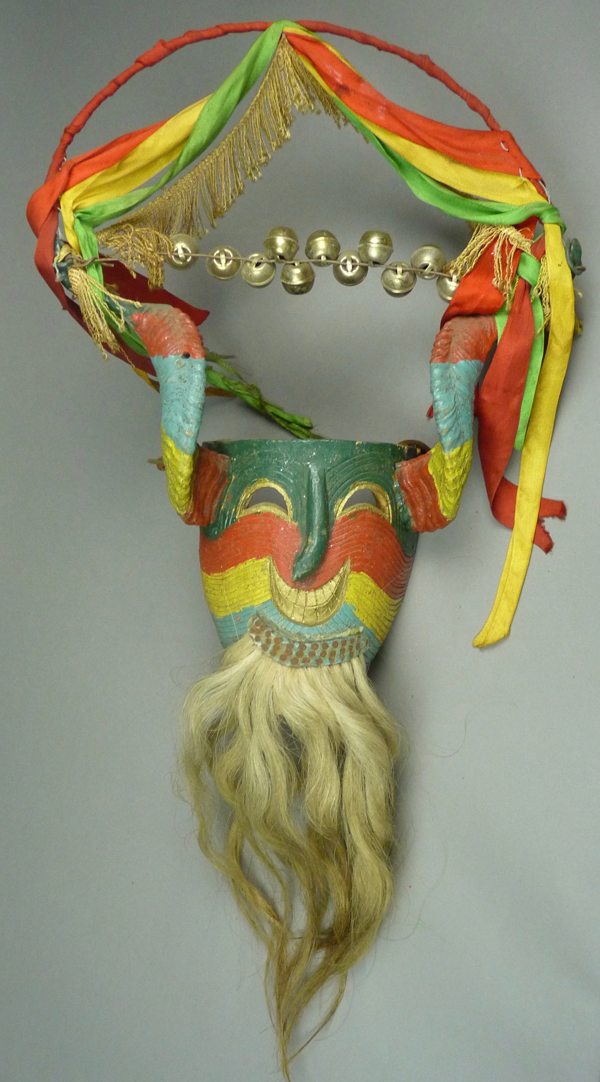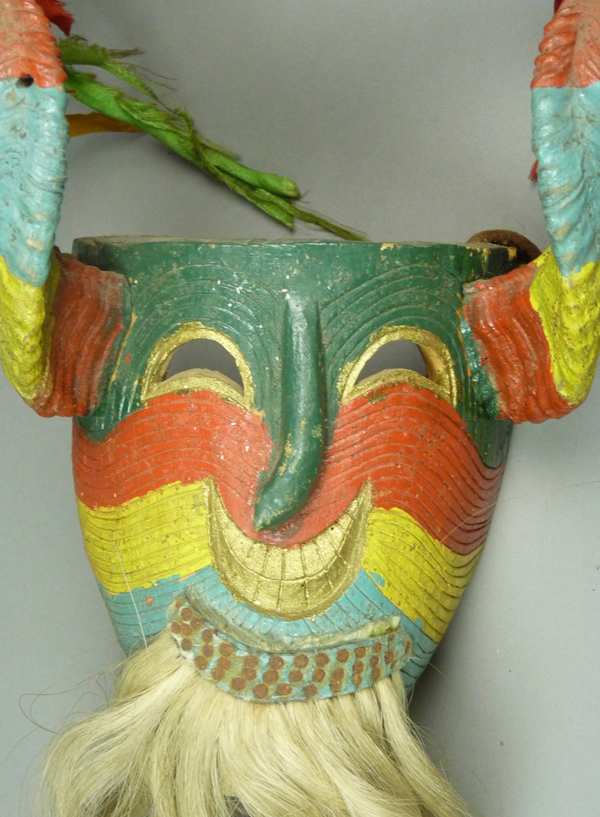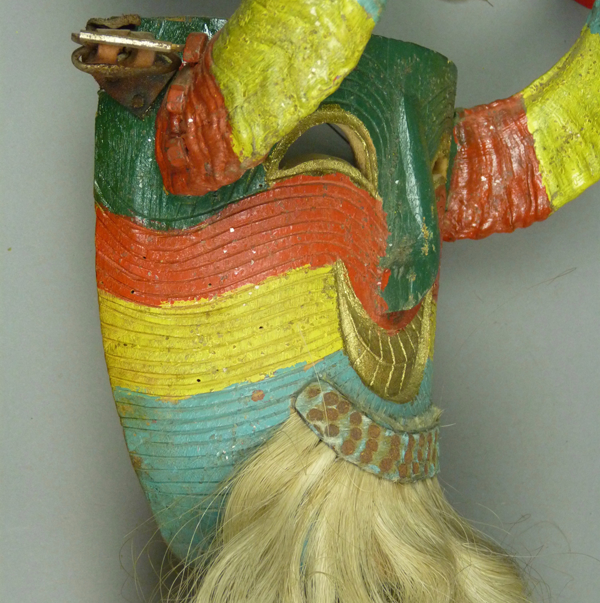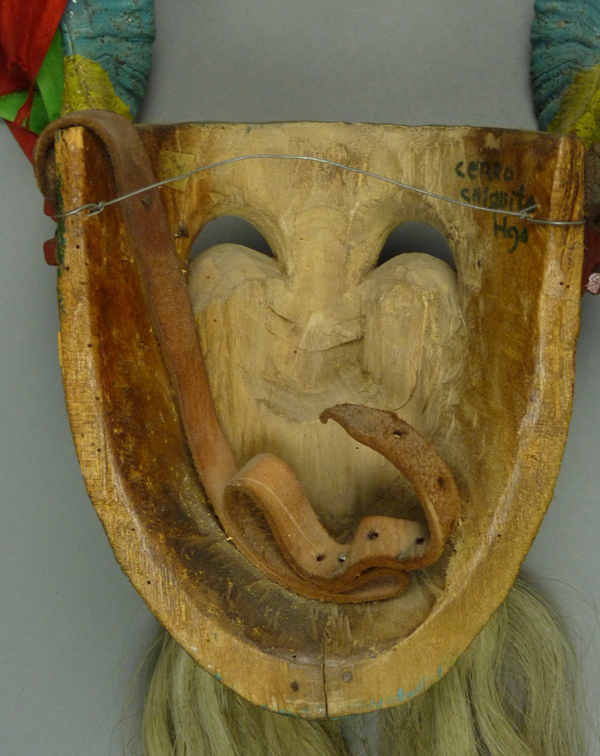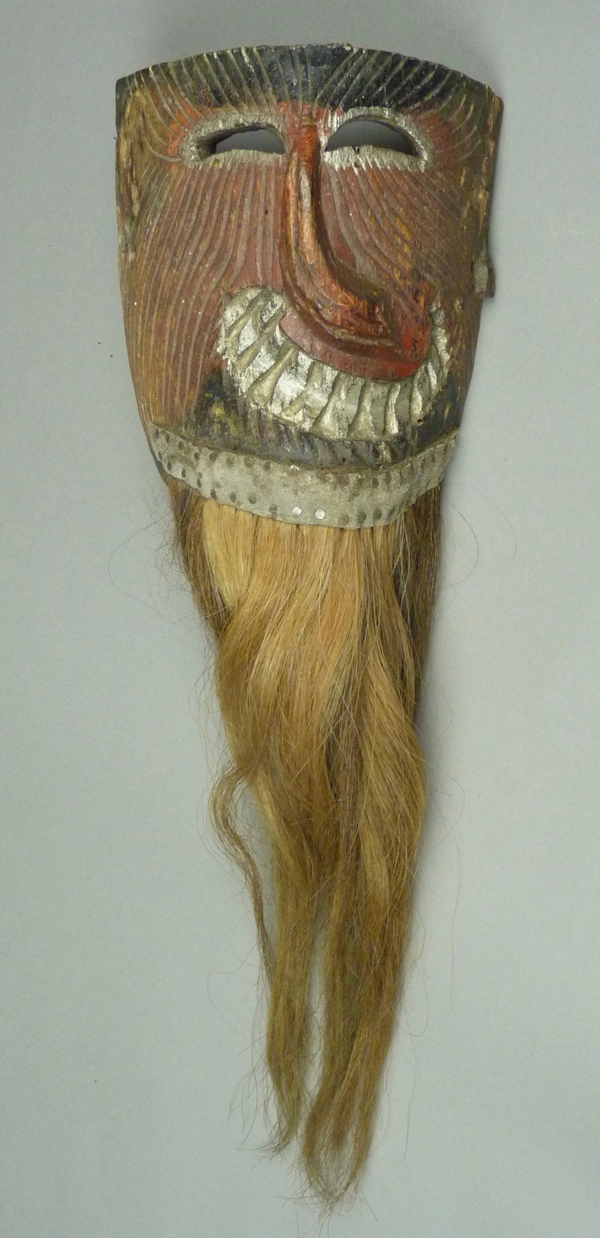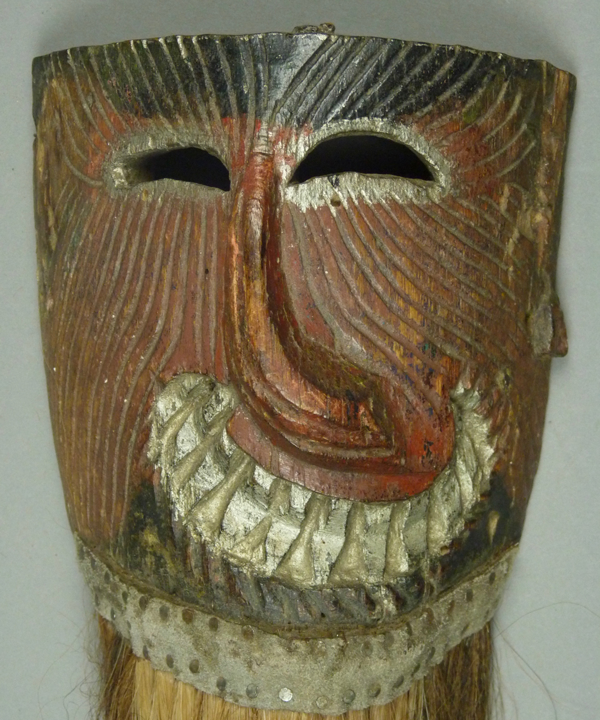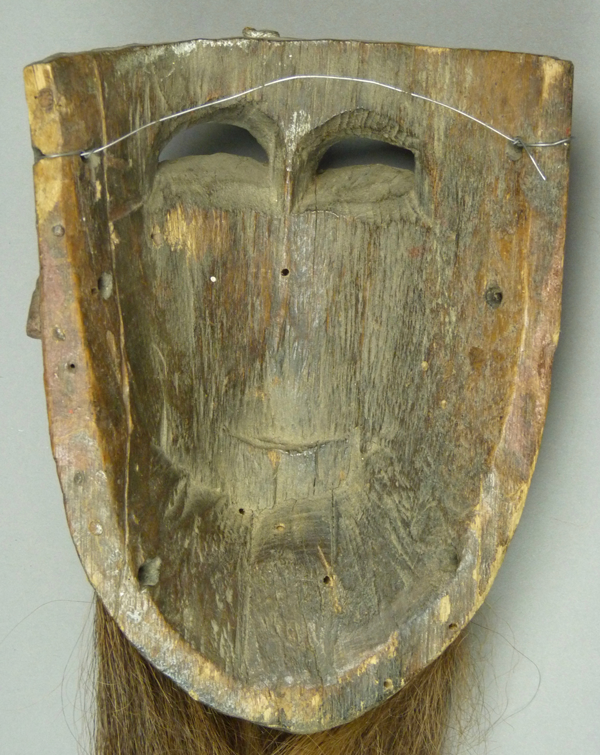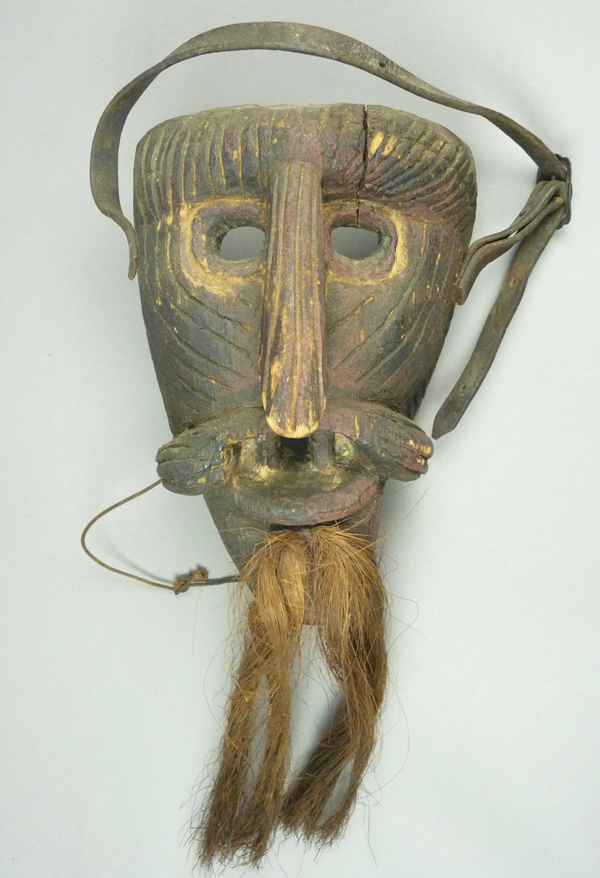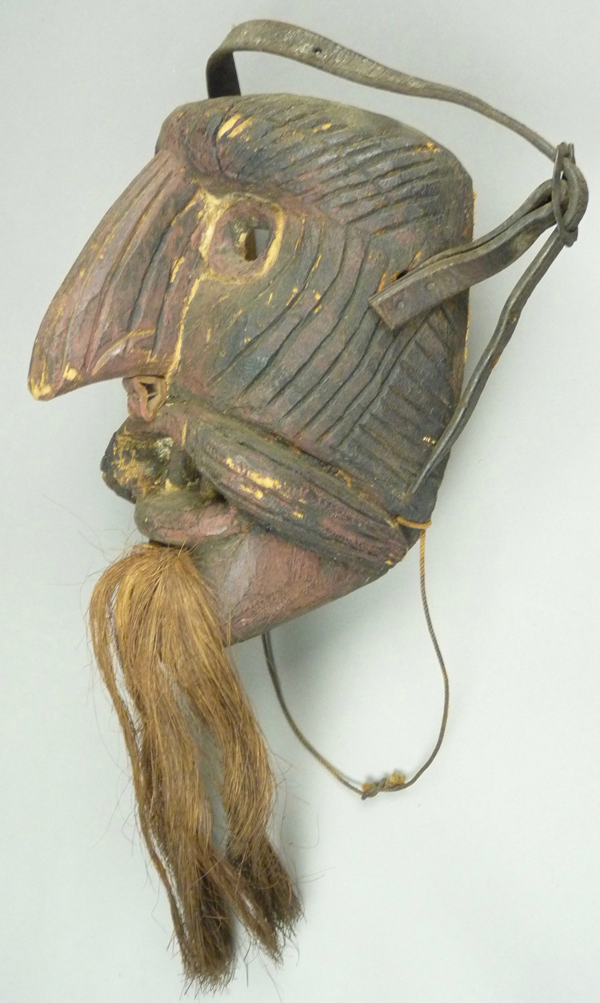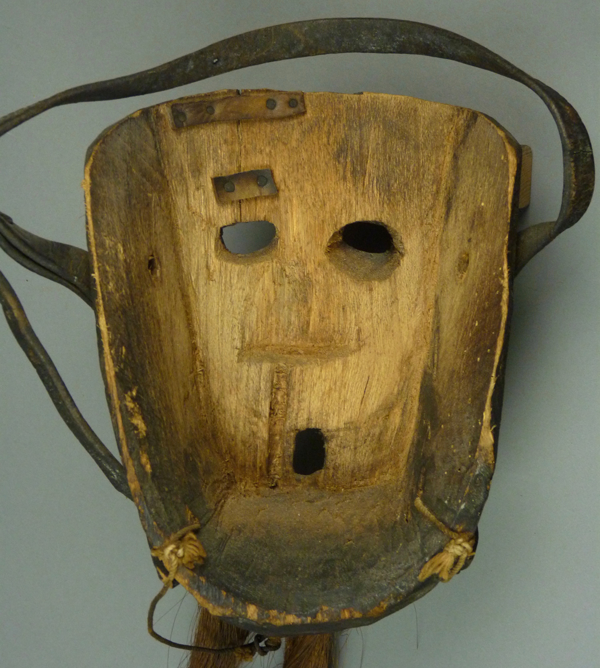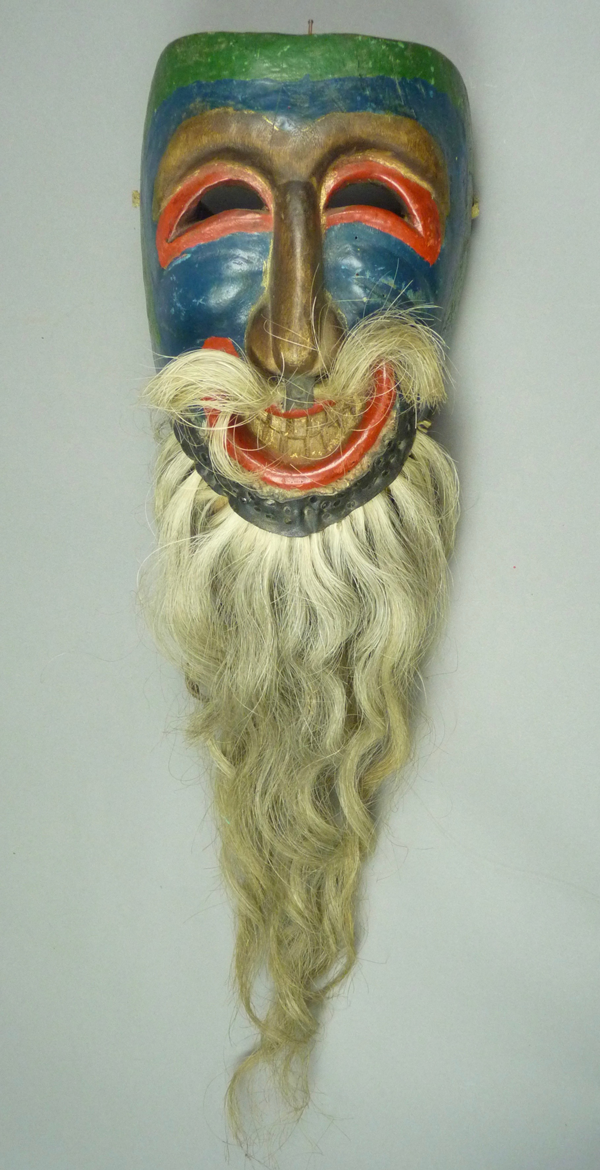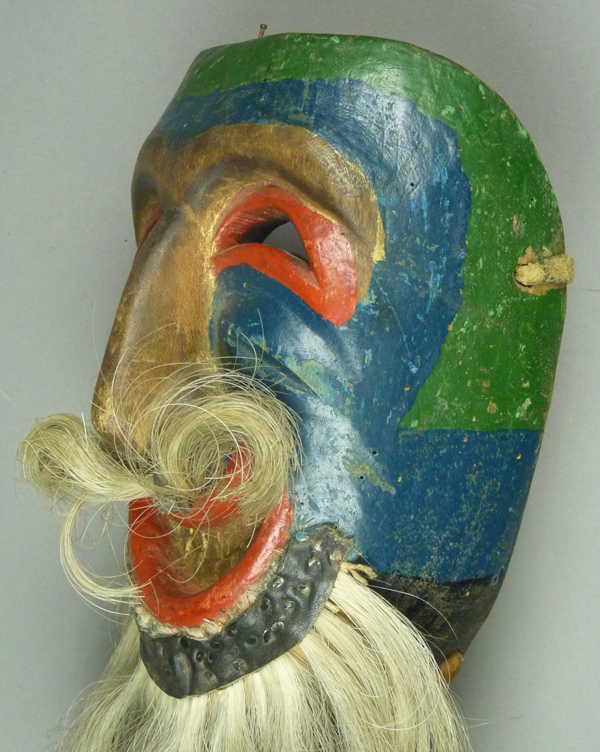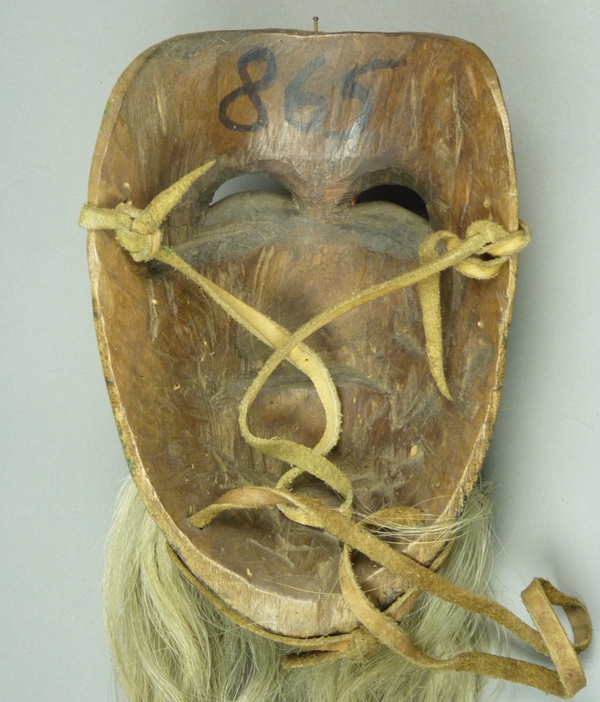This is the last in a series of posts about masks from the Huasteca area of Mexico, and more specifically masks from parts of the Huasteca within the Mexican states of Hidalgo and Veracruz. Today we will look at Macho Cabrillo (“billy goat”) masks from Hidalgo.
For many years I knew about these masks, but only recently did I learn that they could be worn by flyers (Voladores), the dancers who sail down from the top of a tall wooden pole on gradually unwinding and lengthening ropes. Unfortunately, I have been unable to find any further documentation or video to expand our knowledge on this aspect. Here is a Macho Cabrillo mask from San Bartolo Tutotepec, Hidalgo, an Otomí village. I bought this mask from Jaled Muyaes and Estela Ogazon in 1998.
These masks are interesting due to two distinctive features—they have twisted noses and their mouths are contorted in extreme grins. They usually have attached beards made from animal hair (probably goat hair) and of course they have goat horns attached with heavy nails. Colored ribbons dangle from a wire that stretches between the tips of the horns.
This is the typical distorted nose design that one finds on these masks. The nose makes such masks look like works of modern art. Otherwise the face is interesting because of the carved lines.
This mask is relatively small—6½ inches tall, 5¼ inches wide, and just 3¼ inches in total depth. It looks much larger, of course due to the attached beard and horns. The total height of the mask and horns (but not counting the beard) is 18 inches, and the span between the tips of the horns is 11 inches.
The back of this mask seems heavily stained, as if there may have been an applied finish. However it seems that the mask is also fairly old; note the old green paint on the horns that is revealed by the peeling pink paint.
Here is a second example of a Macho Cabrillo mask. I bought this mask from Robin and Barbara Cleaver in 1989. It was said to be from the area of El Nante, Hidalgo. It has much the same design as the first mask, although the curved nose was less delicately carved and the beard is absent.
The paint on this mask has been enhanced by the application of glitter, a common feature of these masks.
The smile on this mask is so extreme that I don’t experience this as an expression of happiness, but rather indicative of something else. But what it is meant to convey I don’t really know. This mask is 6 inches tall, 4¼ inches wide, and 3 inches deep; the distance between the tips of the horns is 14 inches.
This mask appears to be old and worn.
Here is a third Macho Cabrillo mask, said to be from El Nante, Hidalgo. I purchased this mask from Robin and Barbara Cleaver in 1988.
As you can see, it has all the “bells and whistles” of this style.
I was immediately drawn to the wonderful combination of colors.
This mask is 6½ inches tall, 5¾ inches wide, and 2¾ inches deep; these masks are all m/l the same size. The span between the tips of the horns is 12 inches.
This mask has a leather strap with a buckle, something that we will see in another mask that follows.
Here is yet another classic example, but this one has lost its horns. I bought this from Robin and Barbara Cleaver in 1994. It is from El Nante, Hidalgo.
The nose is bent to an extreme degree and there is an overall pattern of grooved lines on the face, similar to what we saw on the last example. If anything, this mask’s mouth is even more extremely shaped than the others.
One can see where horns had once been attached.
This mask is a little taller than the others, at 8 inches. The width is 5½ inches and the depth is 3¾ inches.
This is obviously an older mask. There is an old repaired break on the left edge.
The last two masks are from the same tradition, yet they are distinctly different. I wish that I knew more about them. This is not a Macho Cabrillo mask, although it has similar grooves. It appears to be a mask of a Viejo (an old man). I wonder if it is the mask worn by a straw stuffed effigy from this culture that represents the “Master of the World” (the devil), or by such a dance character. I bought it from Robin and Barbara Cleaver in 1989 and it is from San Bartolo Tutotepec, Hidalgo.
The toothy mouth of this mask is very different from the mouths of the Macho Cabrillo masks. Such oversized teeth may really represent fangs.
Underneath the sooty staining one can see the original red paint or stain. To this day the mask still smells like smoke.
This mask is 8 inches tall, 6 inches wide, and 5½ inches deep.
This mask is markedly stained around the rim, as if it has been heavily used. So it may not have been used on an effigy, but by a dancer.
This last mask has the eyes, the mouth and the beard of a Macho Cabrillo , but lacks the grooves, the twisted nose, and the horns. I bought this mask from John Isaacs, of Albuquerque, in 1997. It was said to be from San Bartolo Tutotepec. In La Tierra y el Paraiso, the catalogue of Mexican masks in the Rafael Coronel collection (Brussels, 1993), there is a similar mask on page 131, plate 011. The caption describes that mask as playful but sinister, and also from San Bartolo Tutotepec, Hidalgo..
On the one hand, the colors on this mask are vivid and striking. On the other hand, as you may recall from my posts about the Xantolo masks (e.g. November 23, 2015—”The Color of Death”), I have concluded that blue and green are colors that mark a mask as representing a dead person.
This mask is 8 inches tall, 5½ inches wide, and 3¾ inches deep.
The back is stained from long use. The number reflects the participation of this mask in the UNAM mask show of 1981, in Mexico City, which featured more than a thousand masks from the collection of Jaled Muyaes and Estela Ogazon.
Next week I will initiate a series of posts about Yaqui and Mayo Pascola masks from the Mexican states of Sonora and Sinaloa.

